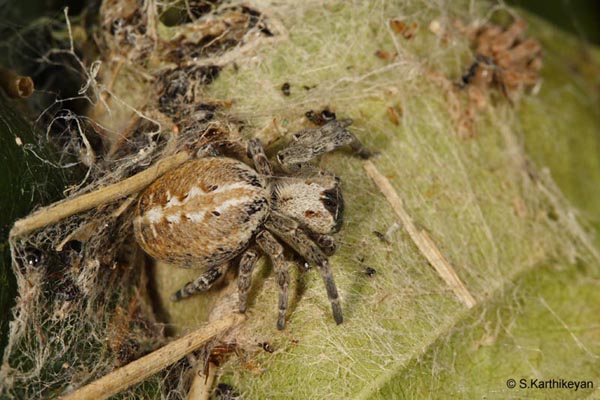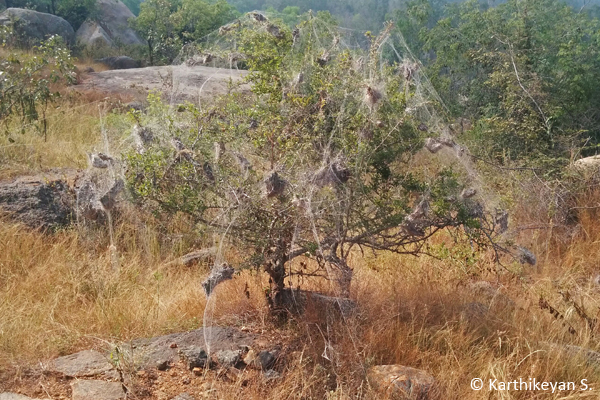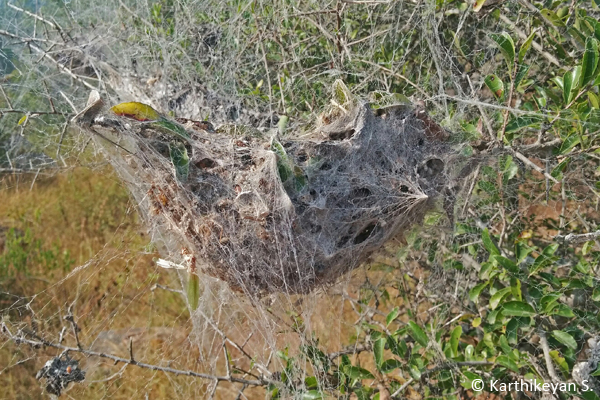It was a few days ago that I noticed a pale grey mass of silken threads on one of the several palm plants in my garden. This was attached to the tip of a palm frond. It looked like some nest with an entrance. One evening, a careful search revealed a small spider almost the same colour of the silk threads sitting at the entrance of the nest. The nest belonged to the social spider. I have seen large nests of the social spiders on shrubs, trees and a variety of other places. But I was surprised to see the social spider in our own garden. This had never been seen in the two decades that we have lived on the premises!

A Social Spider Stegodyphus sarsinorum outside the nest.
As the name suggests, the social spiders live in a group. In this respect they are different from all other spiders (most other spiders are solitary). Each colony of the social spiders is a silken dormitory accommodating all members of that colony.

A shrub with several nests of the Social Spiders.
The members of the colony are not divided into different castes. All members of the colony participate in all the work required to keep the nest and colony functional.
The social spiders are crepuscular and nocturnal. Therefore, members of the colony can be seen coming out to tackle the prey trapped in the web as a group. Very often the prey is taken into the colony for feeding. Though I did not have the opportunity of observing these spiders feeding, the remains of a few insects were seen on the web.
However, a regular watch on the nest continued. After several days, I was in for a surprise. The nest had several young spiders crawling all over the inside of the nest! Only a few days lapsed before the nest fell prey to vandalism and did not permit for further observation.
